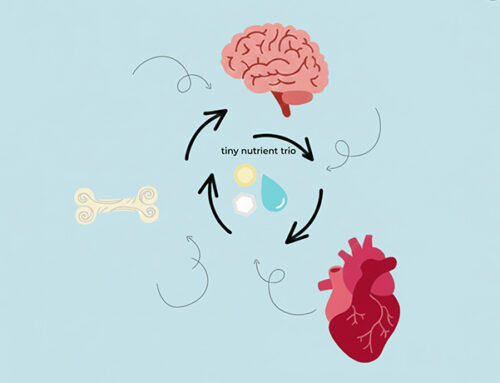From chronic conditions like diabetes to widespread issues such as obesity, metabolic diseases have become an incessant global health concern. These complex disorders, influenced by a combination of genetic, environmental, and lifestyle factors, have the potential to impact nearly every aspect of our well-being. Understanding their causes and symptoms can empower individuals to support their health actively. Furthermore, exploring available treatment options can provide hope for better management or even reversal of these challenging conditions. In this blog post, we demystify the enigma of metabolic diseases – peeling back layers to comprehend their origins, recognizing early signs for prompt intervention, and shedding light on current advancements in treatment approaches. We invite you to join us on this exploratory journey because knowledge is indeed power when it comes to your health.
Metabolic disorders are a group of genetic conditions that interfere with the body’s normal metabolism. They can affect several different processes, including the breakdown and absorption of nutrients, the production of energy, and the removal of waste products. Some examples of metabolic disorders include phenylketonuria (PKU), galactosemia, and glycogen storage disease. Treatment for metabolic disorders varies depending on the specific condition but may include medication, dietary changes, or other interventions. It’s important to consult with a doctor or genetic counselor if you suspect you or your child may have a metabolic disorder.
Understanding Metabolic Diseases
Metabolic diseases, also known as metabolic disorders, are a group of conditions that affect the body’s metabolism – the chemical processes occurring within our cells to convert food into energy. These disorders disrupt the normal functioning of various organs and systems, leading to various health issues. To truly understand metabolic diseases, let’s closely examine how metabolism works.
Our bodies rely on an intricate network of chemical reactions to break down nutrients from our food into usable energy. This process involves enzymes that act as catalysts, facilitating the conversion of carbohydrates, fats, and proteins into energy or building blocks for our cells. However, metabolic disorders can arise when these enzymes are defective or absent due to genetic mutations or other factors.
Metabolic diseases can manifest in numerous ways depending on the specific disorder and affected pathways. Some common metabolic conditions include phenylketonuria (PKU), Gaucher disease, maple syrup urine disease (MSUD), and hereditary hemochromatosis.
Phenylketonuria (PKU) is an example of a metabolic disorder characterized by the inability to break down an amino acid called phenylalanine. This results in a buildup of phenylalanine in the blood and brain, leading to intellectual disabilities without proper management through dietary restrictions.
Gaucher disease is caused by a deficiency of an enzyme called glucocerebrosidase, which accumulates certain lipids in various organs such as the liver, spleen, and bone marrow. This can result in symptoms like enlargement of the liver and spleen, bone pain, and fatigue.
Maple syrup urine disease (MSUD) affects amino acid metabolism and prevents the breakdown of certain amino acids present in proteins. As a result, these amino acids accumulate in the blood, causing neurological problems if left untreated.
Hereditary hemochromatosis is characterized by excessive absorption of dietary iron, leading to its accumulation in organs such as the liver, heart, and pancreas. This iron overload can cause damage to these organs if not detected and managed appropriately.
Genetic Factors
Genetic factors play a significant role in the development of metabolic diseases. In many cases, these disorders are inherited from one or both parents who carry specific gene mutations associated with the condition. This hereditary aspect means that certain metabolic disorders tend to run in families.
Genes provide instructions for making proteins, including enzymes involved in metabolic processes. Mutations or alterations in these genes can disrupt normal enzyme function, impair metabolic pathways, and lead to the development of a metabolic disorder.
It’s important to note that not all individuals with gene mutations linked to metabolic disorders will necessarily develop symptoms or complications. The expression and severity of the disease can vary depending on factors such as the specific mutation and other environmental or lifestyle influences.
For instance, some genetic mutations may result in a complete loss of enzyme activity, causing severe disorders. On the other hand, partial enzyme dysfunction due to specific mutations may result in milder symptoms or even go unnoticed. New genetic testing techniques have greatly improved our ability to diagnose underlying genetic causes of metabolic diseases.
Symptoms and Signs
Metabolic diseases encompass a range of disorders that affect the body’s ability to process and utilize energy. Symptoms and signs can vary depending on the specific type of metabolic disorder.
One common symptom of many metabolic diseases is unexplained weight gain or loss. For instance, individuals with conditions such as hypothyroidism may experience weight gain due to a sluggish metabolism. At the same time, those with certain genetic disorders may have difficulty gaining weight despite consuming adequate calories.
Another hallmark sign of metabolic disorders is abnormalities in blood sugar levels. Conditions like diabetes mellitus can lead to frequent urination, intense thirst, and unexplained fatigue due to inadequate insulin production or insulin resistance. On the other hand, hypoglycemia, characterized by low blood sugar levels, can cause shakiness, dizziness, and even loss of consciousness.
Cardiovascular symptoms are also prevalent in metabolic diseases. High cholesterol levels and hypertension often accompany these conditions, increasing the risk of heart disease, stroke, and other cardiovascular complications. Individuals might experience chest pain, shortness of breath, or even palpitations.
In addition to physical manifestations, changes in the skin can provide valuable clues about underlying metabolic disorders. For example, acanthosis nigricans is characterized by darkening and thickening of the skin around the neck and armpits, often associated with insulin resistance in conditions like polycystic ovary syndrome (PCOS) or type 2 diabetes.
Notably, these symptoms are not exclusive to metabolic diseases alone; they can also be present in various other health conditions. Therefore, it’s important to consult a healthcare professional for an accurate diagnosis if you experience persistent or worsening metabolic symptoms.
Now that we have explored the symptoms commonly associated with metabolic diseases let’s delve into the various treatment routes available for managing these conditions effectively.
Treatment Routes for Metabolic Disorders
Treating metabolic disorders involves a multi-faceted approach, often tailored to the specific condition and individual needs. Here are some common treatment routes for metabolic disorders:
- Lifestyle modifications: Making healthy changes is the first defense in managing metabolic disorders. This includes adopting a well-balanced diet, regular physical activity, maintaining a healthy weight, and avoiding harmful habits like smoking or excessive alcohol consumption.
- Medical therapies: In certain cases, medical interventions may be necessary to manage symptoms and underlying causes of metabolic diseases. This can include medication for diabetes management, cholesterol-lowering drugs (statins) for hyperlipidemia, or hormone replacement therapy in hormonal imbalances.
- Dietary interventions: A carefully planned diet can significantly impact metabolic health. For instance, individuals with diabetes may benefit from monitoring carbohydrate intake and following a low-glycemic index diet to manage blood sugar levels. Similarly, dietary modifications may be advised for individuals with conditions like fatty liver disease to reduce fat accumulation in the liver.
- Surgical interventions: In some cases, surgical interventions may be considered as a last resort when conservative treatments fail to yield desired results. Bariatric surgery, for example, can be an effective option for individuals with severe obesity and related metabolic complications.
It’s essential to remember that the choice of treatment route depends on factors like the specific metabolic disorder, its severity, individual patient characteristics, and medical professional recommendations. Each person’s journey will be unique, requiring a personalized approach.
To determine the most suitable treatment plan for metabolic disorders, it’s crucial to consult with healthcare professionals who specialize in endocrinology or metabolism. They can conduct thorough evaluations, including medical history, physical examinations, and diagnostic tests, to provide informed recommendations based on individual needs.
Medical Therapies
When it comes to managing metabolic disorders, medical therapies play a crucial role. These therapies address underlying genetic or biochemical abnormalities contributing to the condition. While treatment options may vary depending on the specific disorder, certain general approaches are commonly used.
One common medical therapy is enzyme replacement therapy (ERT). This involves administering synthetic enzymes to replace the deficient or malfunctioning enzymes in individuals with metabolic disorders. For example, in Gaucher disease, ERT introduces a synthetic version of the enzyme beta-glucocerebrosidase, which helps break down fatty substances in the body. ERT can significantly improve symptoms and slow disease progression.
Another approach is substrate reduction therapy (SRT). SRT involves reducing the buildup of toxic substances in the body by limiting the production or absorption of certain precursors. For instance, in Fabry disease, SRT aims to reduce the accumulation of globotriaosylceramide (GL-3), which leads to various organ complications. By inhibiting an enzyme involved in GL-3 synthesis, SRT can help manage symptoms and prevent organ damage.
In some cases, gene therapy may be an option for treating metabolic disorders. Gene therapy involves delivering functional copies of genes into cells to correct genetic mutations or enhance enzyme production. This emerging field holds promise for conditions such as cystic fibrosis and certain types of inherited metabolic disorders.
It’s important to note that while these medical therapies offer significant advancements in treating metabolic disorders, they may need to provide a complete cure. Additionally, the availability and suitability of specific treatments depend on factors like the type and severity of the disorder and individual patient characteristics.
Nutritional Guidelines
In addition to medical therapies, nutritional guidelines are crucial in managing metabolic disorders. A carefully planned and tailored diet can help support optimal health and minimize symptoms associated with these conditions.
The primary focus of nutritional guidelines for metabolic disorders is to optimize nutrition while regulating the intake of certain nutrients or substances. For instance, individuals with phenylketonuria (PKU) may need to follow a special diet low in phenylalanine, an amino acid their body cannot metabolize properly. Limiting phenylalanine intake and ensuring adequate intake of other essential nutrients can slow the disorder’s progression.
Specific nutrient supplementation may be recommended for some metabolic disorders to address deficiencies or enhance metabolic pathways. This could involve incorporating particular vitamins, minerals, or cofactors necessary for proper enzymatic activity. The dosage and composition of these supplements are typically tailored to each individual’s needs under healthcare professionals’ guidance.
Adhering to nutritional guidelines can be challenging, especially when it involves strict dietary restrictions or constant monitoring of nutrient intake. However, a well-planned diet can significantly improve the quality of life for those living with metabolic disorders and minimize potential complications.
Living with Metabolic Disorders
Living with a metabolic disorder, such as metabolic syndrome or diabetes, can present various challenges and considerations that affect daily life. These disorders require careful management to maintain optimal health and well-being. One of the primary aspects to address is maintaining a healthy lifestyle through diet and exercise. This involves making conscious choices about the types of foods consumed and their portion sizes.
For example, individuals with metabolic disorders may need to focus on consuming a balanced diet low in refined sugars, saturated fats, and processed foods. Instead, they should prioritize whole grains, lean proteins, fruits, vegetables, and healthy fats. Regular physical activity is also crucial for managing these conditions. Exercises like cardiovascular workouts or strength training can help control weight, improve insulin sensitivity, and manage other symptoms associated with metabolic disorders.
Let’s consider an individual diagnosed with diabetes. They must carefully monitor their blood sugar levels throughout the day and administer insulin if necessary. This process requires strict adherence to a regimen of checking blood sugar levels, calculating insulin dosage, and keeping track of carbohydrate intake.
Additionally, regular medical check-ups and consultations with healthcare professionals are vital in living well with metabolic disorders. These professionals can provide necessary guidance on medication management and monitor progress toward maintaining stable overall health.
Disease Prevention and Risk Factors
Preventing metabolic disorders requires understanding the underlying risk factors contributing to their development. While some risk factors cannot be modified – such as age or family history – others offer opportunities for preventive action.
One significant risk factor for metabolic disorders is obesity or excess body weight. Carrying extra weight increases the likelihood of developing conditions like metabolic syndrome or type 2 diabetes. Adopting a healthy lifestyle with regular physical activity and a balanced diet can help manage weight and reduce the risk of these disorders.
However, it is important to recognize that prevention efforts go beyond weight management. Other risk factors, such as ethnicity and certain medical conditions like polycystic ovary syndrome or sleep apnea, may also contribute to the development of metabolic disorders. Moreover, gestational diabetes or a family history of type 2 diabetes further amplifies the risk. By addressing these risk factors holistically, individuals can take proactive steps toward preventing future complications.
Think of it as building a strong foundation for a house. Each brick represents a healthy behavior or preventive action, such as maintaining a healthy weight, exercising regularly, eating a nutritious diet, managing stress levels, and avoiding smoking or excessive alcohol consumption. The stronger the foundation, the better equipped one is to combat metabolic disorders.
By implementing lifestyle modifications and making informed choices about nutrition and physical activity, individuals can significantly lower their risk of developing metabolic disorders. It’s crucial to consult with healthcare professionals who can provide personalized guidance based on individual risk factors and needs.




